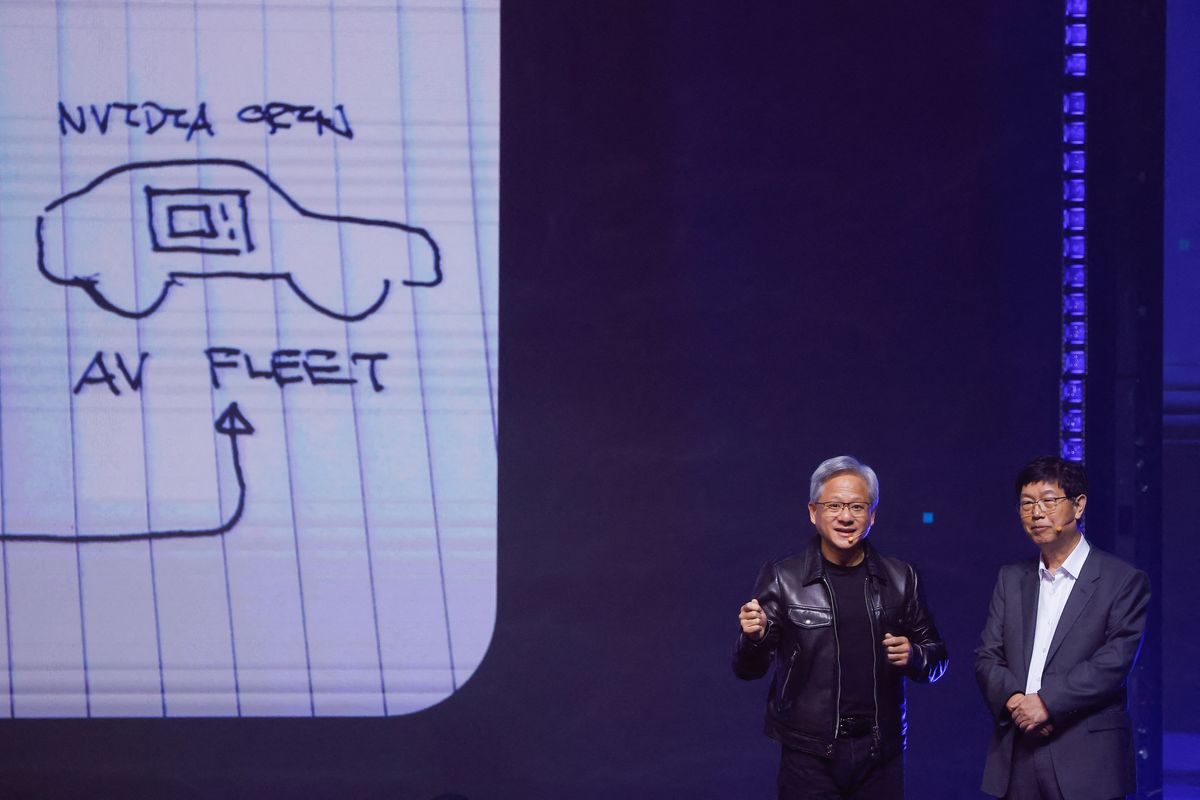Nvidia's AI-powered chip design
Nvidia is exploring the use of chatbots that generate human-like responses, particularly for semiconductor design.

A few minutes every morning is all you need.
Stay up to date on the world's Headlines and Human Stories. It's fun, it's factual, it's fluff-free.
The backstory: Last year, OpenAI's ChatGPT created a buzz in the tech world, sparking an artificial intelligence (AI) frenzy with major players like Google and Microsoft entering the scene. Among them was Nvidia, a chipmaker established in 1993, initially known for creating graphics processing units (GPUs) for gaming way back in 1999. These GPUs, it turned out, are also crucial for training deep-learning AI models. This led tech giants like Amazon, Google, Meta (formerly Facebook) and Microsoft to scramble for Nvidia chips. In fact, Nvidia's market value has even soared past US$1 trillion, putting it in the same heavyweight league as tech titans like Apple, Microsoft, Alphabet and Amazon.
More recently: In May, Nvidia CEO Jensen Huang introduced a range of AI innovations, including advanced robotics design, enhanced gaming experiences and innovative advertising tech. Last month, Nvidia collaborated with Foxconn to establish "AI factories." These factories are described as hubs for producing intelligence, enabling tasks like teaching self-driving cars, operating robots and managing large-scale language models.
The development: Nvidia is now exploring using chatbots that generate human-like responses, particularly for semiconductor design. Now, that might sound a bit niche, but it's huge. Modern chips, which power our devices, consist of billions of tiny transistors. Arranging them on a small silicon surface is a complex task that often takes years for teams of engineers to master.
So, what's Nvidia up to? It’s combined a large language model, which is sort of like your everyday chatbot, with its decades of chip design expertise. This approach is looking to streamline communication between newbies and pro designers. Junior designers can now tap into chatbots for quick answers, saving senior designers some time.
Nvidia is also introducing AI-powered code generation to help engineers diagnose chip malfunctions. The company said the goal here is not to replace humans but to enhance their capabilities, boosting productivity and efficiency.
Key comments:
"Our goal here is not to automate the process or replace people, but to take the people we have and just give them superpowers to make them more productive," said Nvidia chief scientist Bill Dally to Reuters.
"It turns out a lot of our senior designers spend a fair amount of their time answering questions from junior designers," Dally told Reuters. "So the protocol was a junior designer asks the chatbot. This can save senior designers a huge amount of time."
"A new type of manufacturing has emerged – the production of intelligence and the data centers that produce it are AI factories," said Nvidia CEO Jensen Huang last month.
"We view Nvidia as the most important company on the planet in an era that is rapidly changing towards one that will be emphasized by greater AI capabilities," said CFRA Research analyst Angelo Zino.
"Technical traders and AI mania have pushed Nvidia toward the US$1 trillion cap and it is not inexpensive," said Argus Research analyst Jim Kelleher.




Comments ()